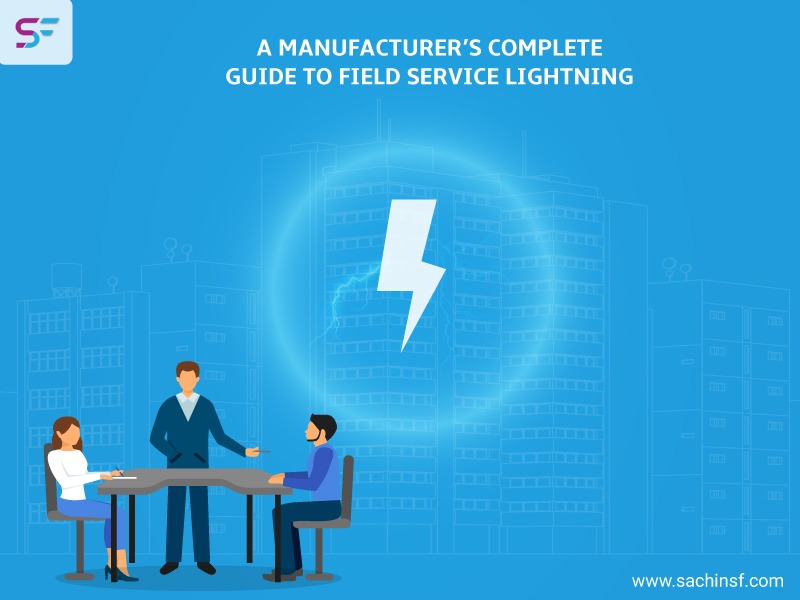Salesforce, the world’s leading CRM, has launched Field Service Lightning (FSL) as an add-on to one of its products called Service Cloud to automate, manage, and integrate field service management operations for service workers on mobile devices.
Salesforce Field Service Lightning was originally developed for dispatching, monitoring, and reporting the activities of field service representatives. The world’s number 1 customer relationship management company provides transformational Field Service Lightning solutions that are used to create cases and work orders, optimize schedules, track mobile locations, assign jobs, and more. FSL is the perfect platform for manufacturers looking to redesign their service processes or developing them for the first time.
If your business is considering implementing FSL, here’s everything you need to know to smoothly and seamlessly execute the implementation process.
Things to do to prepare for implementing FSL
To ensure your business can make the most of the technology, we recommend that you do the following:
Creating an Inventory Management System – One of the most important selling points of Lightning Field Service is the ability to let technicians do their work with a single mobile application. Seeking for manuals, collecting customer signatures, and track nearby trucks, these all can be done with the application using an integrated inventory management system. To use this particular feature, you must have an excellent inventory tracking system.
Prepare for extensive customization to improve delivery performance: Field Service Lightning’s Dispatcher Console, the main workspace for dispatchers, provides a big picture of your entire service team, including the location of each technician and each meeting. With smart scheduling, dispatchers can optimize performance by automatically assigning the right resources based on time, skills and location. Nevertheless, you need great setup practices and efforts to optimize these business processes. Before the dispatchers can automatically assign the right resources for a job, several objects and work rules need to be adjusted, including service territories, operating hours and skills.
Analyze your cases, quotes, orders, and reports – Before heading to the implementation process, ask yourself a few questions about how your company handles the case/quote/order-to-work-order process: What are the main steps you need to follow? Are you satisfied with that? Or do you think that some changes must be made?
Salesforce Field Service Lightning Licenses
Field Service Lighting consists of many different coordinated components that define the platform is used by many different roles. Each of these roles has different responsibilities and therefore requires different permission and account settings.
Agent: In Salesforce, the primary responsibility of an agent is to respond to customer calls and create cases based on them. In some cases when cases require an on-site visit, agents will arrange service meetings to let their co-workers what to do. This means they don’t need to access parts of the Salesforce platform that are specific to Field Service Lightning, such as dispatcher console or mobile Field Service Lightning applications, service cloud object services like Cases, Work Orders, Assets and Entitlements. The default permissions for the FSL Agent License and the FSL Agent License permission provide agents the access they need.
Dispatcher: As soon as the agent arranges service appointments it is automatically displayed on the Field Service Lightning Dispatcher Console. At this point, it’s the dispatcher’s job to allocate the right resources to the job and find out opening times for them. For this, you need permission for “FSL Dispatcher License” and “FSL Dispatcher Permissions“. However, anyone who needs to access to the Dispatcher Console requires the same permissions.
Technician: With the Field Service Lightning mobile app, technicians can see all upcoming appointments, assign them, and understand the details of each appointment. This requires “Field Service Mobile” permissions. Moreover, you also need “Field Service Scheduling” permissions to show up as a resource available in the Dispatcher console. These permissions fall under the category i.e. “FSL technician licenses”.
Conclusion
Field Service Lightning, one of the Service Cloud offerings, allows service providers to transform and manage every customer’s operations across the complete service chain all on one powerful integrated platform. Field Service Lightning provides a connected and highly customizable customer experience. Furthermore, it helps your field service workforce productivity, automates appointment scheduling, gets real-time visibility, optimizes mobile workforce allocation, manages jobs in the field using a smartphone, etc.

